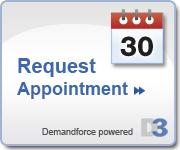Occasionally, when a pet presents for rehabilitation, there are at-home exercises that the veterinarian will "prescribe" for you to work on at home with your pet. These exercises, though seemingly simple in nature, are part of the comprehensive plan that is set forth for your pet's recovery. It is important that we work together as a team - veterinarian, technician, and owner - to get your pet healing and improving as quickly as possible.
Some basic examples of an at-home therapy program include:
"Sit-to-stands:" this movement, when repeated, works to strengthen the quadriceps, which is especially important for dogs with muscle atrophy in the hind legs. Imagine yourself doing repetitions of squats.
"Cavalettis:" having your dog walk slowly and methodically over specifically placed poles helps teach your pet where their feet are in space (proprioception), increases joint range of motion, and assists muscle strengthening.
Physioroll standing exercises: good for generalized weakness, especially after spinal surgery. The ball assists the patient in the basic task of standing, also allowing for you to do some weight-shifting exercises for strengthening and proprioceptive training.
Hill-walking: used for muscle-strengthening. Think about walking on a treadmill, and then increasing the incline. The steeper the angle, the harder it is. For a dog, walking uphill shifts the weight to the hindlimbs, helping strengthen the quadriceps; and walking downhill shifts weight to the forelimbs, strengthening the triceps. Hills can be walked directly up or down, at an angle, or parallel to the top.
Joint Mobilizations: similar to passive range of motion, a joint mobe is when you isolate a particular joint and move it as opposed to moving the entire limb. Your pet is not actively involved in the motion. Joint mobes help increase range of motion (the extent of flexion and extension at a particular joint) and stimulate proprioceptors within the joint.
After a thorough examination, the Rehabilitation Specialist will let you know which, if any, exercises would be best for you to do at home, and in what combination. How often, how many repetitions, and level of difficulty will all be decided based on your pet's capabilities upon presentation. Any at-home exercise program can be adjusted as your pet improves to increase the difficulty and challenge your pet as it heals.


